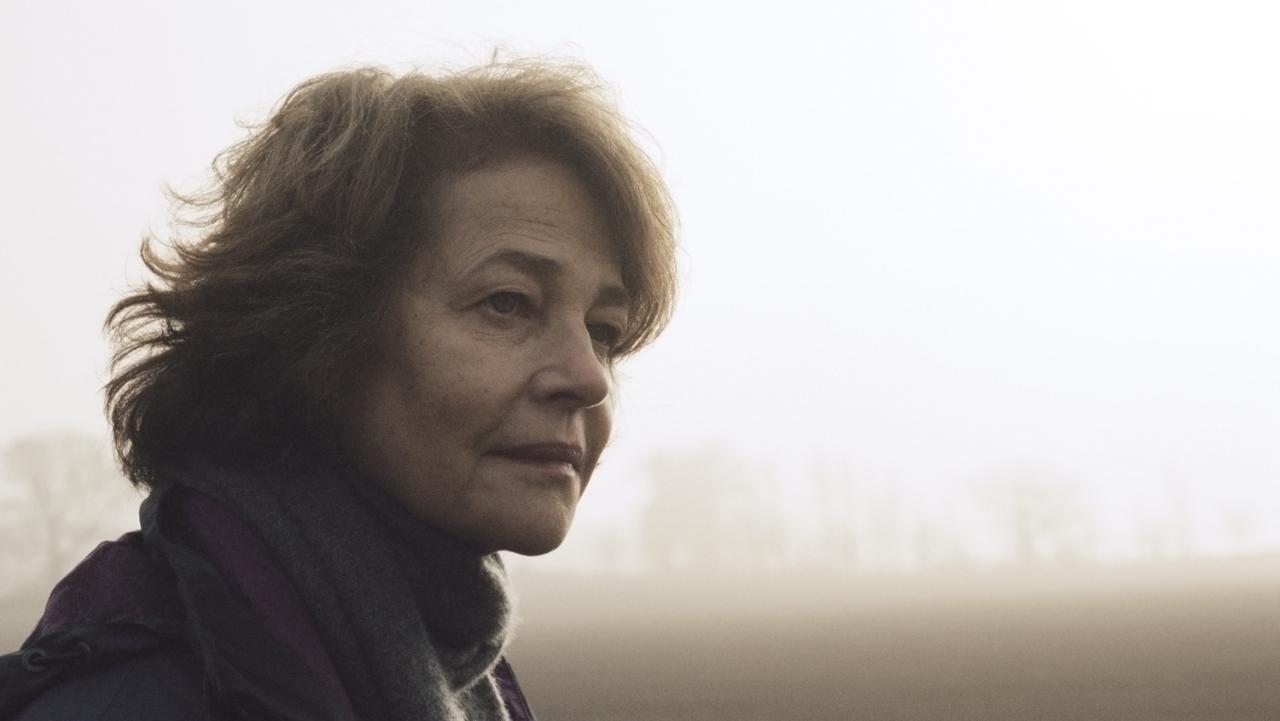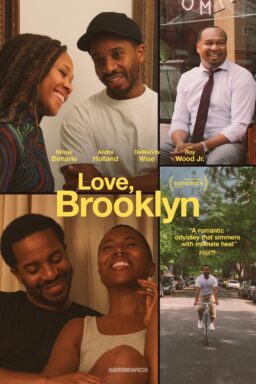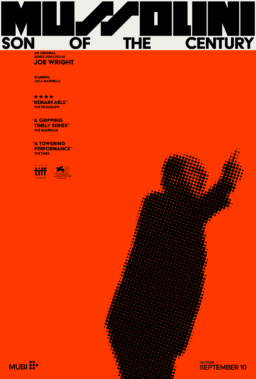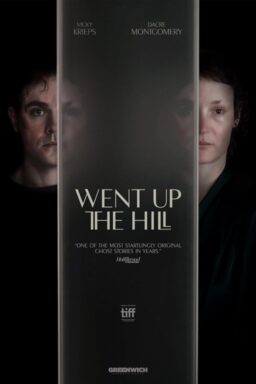Although I am professionally obligated to care about the annual Oscar scrum, I must admit that there are a couple of wild cards in contention this year that have actually sparked my interest. Having been an unexpectedly dominant player in the various critics awards, is there a possibility that “Mad Max: Fury Road” could actually be in competition for the big awards? Could the wonderful “Anomalisa” upset the equally wonderful “Inside Out” for Best Animated Feature? Most intriguingly of all, is there a chance that the great British actress Charlotte Rampling might finally score her first Oscar nomination for her work in the acclaimed new drama “45 Years”? Based on the number of awards she has already collected this year for her performance as a woman whose seemingly stable marriage to her husband (Tom Courtenay) is shaken only days before their 45th anniversary when they receive some startling news regarding someone from his past, it seems entirely likely that she will make it to the final five in what is an unusually competitive category this year, both for the quality of her performance and as a way of honoring her long, eclectic and utterly unique career.
Presented in conjunction with the American opening of “45 Years” and to tie in with the interest that may follow with an Oscar nomination, the IFC Center in New York is presenting “Charlotte Rampling,” an eight-film retrospective running from January 8 through March 6 that will allow moviegoers to glimpse some of the highlights of her career on the big screen and, with one exception, in glorious 35mm. For those unfamiliar with her work, this will prove to be a valuable introduction to an actress that has beguiled and fascinated audiences around the world for more than 50 years with her compelling and oftentimes unsettling combination of talent, intelligence, beauty and a willingness to tackle risky and challenging material. For fans of her work, the only bummer about this particular lineup is that by limiting it to only eight titles, there are a number of worthy films that have not been included—how is it possible to have a Charlotte Rampling retrospective and not include a screening of John Boorman’s 1974 cult classic “Zardoz”? Nevertheless, this is a strong collection of films celebrating one of the best actresses we have working today and it serves as a great way for moviegoers to ease into the new year. Here is a brief look at the lineup.

After getting her start as a model and making her official screen debut as “Water Skier” in Richard Lester’s “The Knack. . . and How to Get It” (1965)—though it has been said that she can be seen dancing briefly in “A Hard Day’s Night” from a year earlier—Rampling got her first prominent role the next year in the acclaimed comedy-drama “Georgy Girl.” As Meredith, the beautiful, bitchy and shallow young woman who casually mistreats her far friendlier roommate (Lynn Redgrave), gets knocked up by her boyfriend (who is secretly in love with the roommate) and, after insisting on marrying and having the child as a way of alleviating her boredom, abandons them both the minute she tires of them, she captures the dark flip side to the carefree Swinging Sixties era—where the carefree attitudes of the day slip over into hedonistic self-absorption—to almost terrifying effect. That said, she doesn’t play the character as a monster per se—just as someone who thinks only of themselves because they know that, at least for the moment, they possess all the superficial qualities that allow them to get away with such things. Although Redgrave received the lion’s share of the acclaim when this film came out, Rampling is just as much of a standout in an infinitely trickier role.
Over the next few years, Rampling divided her time between roles on television and film, including appearances in Lucino Visconti’s “The Damned” (1969), the horror omnibus “Asylum” (1972) and the head-spinning sci-fi cult classic “Zardoz” 1974. (She also appeared in a supporting role in another cult favorite “Vanishing Point” (1971) but her scenes were cut before it was released in America.) It was at this point that she took on what continues to be the most controversial role in a career filled with risky performances in Liliana Cavan’s still-startling 1974 sexual psychodrama “The Night Porter.” In it, she played a woman who happens to meet the man (Dirk Bogarde) that she knew years earlier when he was an SS officer in a concentration camp and she was a young inmate under his sadistic but sometime tender care. Holed up in the Viennese hotel where he now works as a low-profile porter, the two rekindle their twisted and mutually degrading sadomasochistic relationship as they head towards mutual self-destruction. Combining a depiction of sexual, romantic and sadomasochistic obsession that puts nonsense like “Fifty Shades of Gray” to shame with a serious inquiry about post-war Europe trying to come to terms with the atrocities of its recent past, the film raised any number of hackles when it first came out. It’s still on the shocking side today. Rampling is absolutely stunning—few actresses would have dared to appear in such a film in such a role and even fewer could have pulled off every nuance, from the heartbreaking to the erotic, as well as she did. (Alas, this is the one film in the retrospective that is not being presented in 35mm—a DCP will be used instead.)
From there, Rampling moved on to another kind of on-screen darkness with “Farewell, My Lovely” (1975), a neo-noir adaptation of the Raymond Chandler novel (previously filmed in 1944 as “Murder, My Sweet”) that featured no less of a screen icon than Robert Mitchum as detective Phillip Marlowe and an undeniably eclectic cast that also included the likes of John Ireland, Sylvia Miles, Harry Dean Stanton and a pre-“Rocky” Sylvester Stallone. In it, she plays Helen Grayle, a seductive socialite who crosses paths with Marlowe while he is investigating cases involving the missing girlfriend of a recently released convict, and a recently murdered client involved with blackmail and a stolen necklace. Aside from the treat of seeing Mitchum playing Marlowe (yes, he is too old for the role and no, it does not make an iota of difference), this is arguably the least consequential of the films in this series. That said, it is fun to watch Rampling go through the standard femme fatale pacings while more than holding her own against the likes of Mitchum—it makes one wonder idly what she might have accomplished had she been working in Hollywood back in the days when film noir was at its peak.
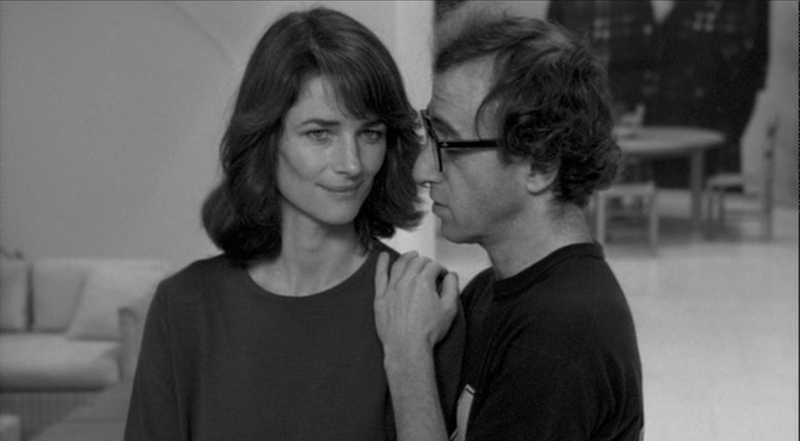
After playing Irene Adler in the TV film “Sherlock Holmes in New York” (1976) opposite Roger Moore as Holmes, Patrick Macnee as Watson and John Huston as Moriarity and appearing in one of the silliest endeavors of her entire career with the infamous Dino DeLaurentis “Jaws” knockoff “Orca the Killer Whale” (1977), Rampling eventually did what virtually all talented actress of her era and beyond do at some point in their career—working with Woody Allen. In “Stardust Memories” (1980), she plays the troubled ex-girlfriend of a successful-but-neurotically depressed filmmaker reminiscing through his life and loves while stuck at a weekend film but retreat. Although now often regarded as one of Allen’s best and most adventurous films, this one sharply divided audiences and critics alike. But even back then, Rampling’s work was singled out for praise, especially in the shattering monologue that her now-institutionalized character delivers straight to the camera (one of the most powerful moments in the Allen oeuvre). There was also the equally stirring moment when Allen’s character reminisces about a Sunday afternoon in his apartment when he saw her sitting there (while Louis Armstrong’s “Stardust” played in the background) and realized that even a world as messed up as ours could still provide moments of absolute perfection and bliss.
Rampling’s next screen appearance came two years later when she was cast in the legal drama “The Verdict” (1982) as a mysterious woman who becomes involved with an alcoholic lawyer (Paul Newman) as he is preparing to take on the Archdiocese of Boston in a malpractice case. Although the film is commonly thought of as a mere showcase for Newman (who really deserved to win the Oscar for this role), he gets considerable help from a strong supporting cast that, in addition to Rampling, includes the likes of James Mason, Jack Warden and Milo O’Shea. In the hands of a lesser actress, the scenes involving Rampling’s character might have seemed faintly superfluous to the story and the climax to that storyline, in which Newman brutally confronts her after discovering who she really is, overtly nasty. Rampling, on the other hand, breathes real life and character into what could have been a mere caricature—as she did with Mitchum, she more than holds her own with Newman in their scenes together and as a result, her final scenes with him are undeniably powerful and affecting.
Over the next two decades, Rampling worked steadily, mostly in European films, and some of the more notable films of this period included the jaw-dropping “Max, Mon Amour” (1986), a bizarre comedy from Nagisa Oshima (yes, the guy who made the laugh-a-minute “In the Realm of the Senses”) in which she plays the wife of a British diplomat in Paris who takes on a chimpanzee named Max as her lover (and yes, you read that correctly), the notoriously bloody and sexy mystery “Angel Heart” (1987) and adaptations of “The Wings of the Dove” (1997) and “Great Expectations” (1999)—the latter as a Miss Havisham that you cannot believe anyone would voluntarily abandon. One of her biggest roles during this time was in another screen version of a literary classic, in this case Michael Cacoyannis’ take on “The Cherry Orchard,” (1999), Anton Chekov’s classic play about a group of ennui-filled aristocrats who essentially stand by as their estate, and its famed cherry orchard, is sold in order to repay their debts. This isn’t a particularly great movie by any means—like too many others, Cacoyannis relegates much of the humor that Chekov had included in the text to the background in order to stress the drama—but Rampling’s performance as Ranevskaya makes it worth watching. Benefitting from additional material that helps to further flesh out her character, she does an excellent job of portraying a person who is more than aware of her own problems and flaws but who is nevertheless unable or unwilling to do anything to change her behavior or her fate.

In 2000, she began what would prove to be the most fortuitous collaboration with a director in her entire career when she was cast in “Under the Sand,” an intense psychodrama from celebrated French filmmaker François Ozon. In it, she plays a happily married and seemingly stable literature professor whose summer vacation with her husband in the south of France takes a dark turn when he goes for a swim while she sunbathes and seems to simply vanish. With no body and more questions than answers (Did he leave her? Commit suicide? Drown? Drown while looking for a place to commit suicide?), her only response is to simply pretend that nothing has happened and that he is still alive and with her in their apartment, a delusion that she continues even after what happened to him is finally established. Like many of Ozon’s films, this is a kind of dramatic high-wire act in the sense that if there is even the slightest misstep, the whole enterprise could come crashing down. Luckily, it holds up beautifully thanks to Rampling’s stunning work—rather than milking the role for every melodramatic drop, she approaches it in a cooler and more intellectual way that actually inspires an even more emotional response to the final scenes than might have been achieved with the usual scenery-chewing emoting. This would prove to be the first of four collaborations to date with Ozon—they would work again on the spellbinding erotic drama “Swimming Pool” (2003), the odd historical romantic drama “Angel” (2007) and “Young & Beautiful” (2013), where she has one stunning scene as a recently widowed woman who arranges a meeting with the young prostitute who was with her husband when he died.
In recent years, she has continued to work steadily. There were supporting turns in such projects as “Aberdeen” (2000), “Spy Game” (2001), “The Statement” (2003), “Lemming” (2005), the supremely silly “Basic Instinct 2” (2006), the even sillier “Babylon A.D.” (2008), “The Duchess” (2008), “Life During Wartime” (2009), “Never Let Me Go” (2010), “Melancholia” (2011) and “The Forbidden Room” (2015). She also had a notable lead role in “Heading South” (2005) as one of three women in the late 1970’s who venture off to Haiti for a sex holiday that takes a dark turn when two of them go after the same guy and all three begin to recognize the appalling economic and political conditions befalling the people who have to stay behind after they get to go home, and even a recurring role during the last season of the serial killer drama “Dexter.” Now, of course, there is “45 Years” and while I have a few issues with the film as a whole—the storyline at times plays more like a riff on an old “Alfred Hitchcock Returns” episode than a serious drama—I have none with Rampling’s work as a woman who is stunned to discover that after 45 years of marriage, her seemingly loving husband is still a mystery to her. It is an amazing turn and to see the raw emotions of her character pierce through her typically cool facade is mesmerizing (including a final extended shot that is all the more stunning as the result of her silence). However, as this series proves, the career of Charlotte Rampling is one that has be marked by numerous great performances over the years and that will hopefully continue on into the future.
For more information on the “Charlotte Rampling” retrospective, including screening dates and times, go to www.ifccenter.com/series/charlotte-rampling

